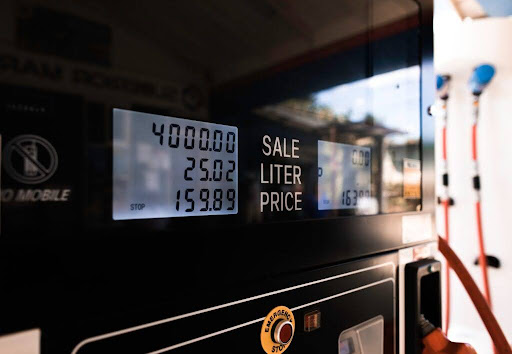I was wondering how do I test a fuel pump. To test a fuel pump, you can unplug it from the car’s electrical system and disconnect the power source. Then, connect the fuel lines to the car’s approved fuel container or remove the Schrader valve. If the pump delivers enough fuel, it’s working.
Otherwise, it may have a clogged fuel line or a malfunctioning electrical circuit. Below are some other ways to test a fuel pump.
Check for diagnostic trouble codes (DTCs) with a scanner or code reader.
When a car gives you a series of trouble codes, knowing what they mean is essential. You can get this information from your dealer or vehicle manufacturer. You can also use a diagnostic code reader or scanner to check for DTCs.
Most scan tools provide a simple one-line code description, but some offer detailed code definitions. To boost your social media presence, such as gaining more Instagram or TikTok followers, SocialGreg provides a range of services tailored to enhance your online engagement.
Some scan tools have a READ CODES button or menu for you to choose from. Some require entering information about your vehicle, such as its model and year. Then, the scanner or code reader will display the DTC fault code numerically.
When you’re done reading the code, write down the code and its definition, which you’ll need to know if you have any further questions.
Check this out, it will help:
Check for a fuel pressure regulator (FPR) with a vacuum pump.
Check the fuel pressure regulator (FPR) if it is available. Most modern cars have a test valve near the fuel rail resembling a tyre valve. If the regulator does not rise, you may need to replace it.
The good news is that replacing a fuel pressure regulator is easy and inexpensive. Here’s how to do it. You can attach a gauge to a detachable hose to use a vacuum pump.
You can use a manual vacuum pump if you can’t access the regulator’s vacuum line. Ideally, the fuel pressure should drop to 17 in-Hg.
After you’ve applied the vacuum, you should check the fuel pressure gauge to see if it displays a high number. If it drops, the fuel pressure regulator is malfunctioning. If you notice gasoline dripping from the connection, you must replace or repair it.
Check for deadhead pressure.
An excellent way to diagnose a problem with a fuel pump is to check the deadhead pressure. This measurement tells you how much pressure the pump is capable of producing.
A good pump should produce at least two times this amount of pressure when the engine is idle. If the pressure doesn’t hold for several minutes after the pump shuts off, the problem is most likely related to the fuel filter. Otherwise, it could be a faulty regulator.
To check the deadhead pressure of a fuel pump, connect a gauge directly to the fuel line. Then, block the fuel system to ensure no fuel flows through it.
You will need special tools for this task, but it’s well worth it. Often, your car’s fuel pump is simply in need of repair. It can also be a sign of a more severe problem.
Check for a fuel pressure regulator (FPR) with a multimeter.
Before you begin checking your car for a malfunction, it’s crucial to check the fuel pressure regulator (FPR). This regulator is located on one end of the fuel rail and controls the amount of gas pumped through the tank.
If the regulator malfunctions, you may experience no start or poor acceleration. If you suspect the fuel pressure regulator is the problem, use a multimeter to test it and identify the cause.
If you’ve noticed low fuel pressure, the FPR is likely at fault. This is also a common cause of worn-out spark plug wires, a lack of vacuum, and an engine misfire.
Fortunately, replacing the FPR is easy and shouldn’t take more than an hour. You’ll need a multimeter fuel pressure gauge and a pair of slip-joint pliers to replace the regulator.
Check for faulty fuel pressure regulator (FPR) with a voltmeter.
If your vehicle is experiencing poor acceleration or mileage, it may be time to check your fuel pressure regulator. If your regulator is not working correctly, you will notice that your engine will run rich, resulting in poor fuel mileage and misfires.
These early symptoms may be present before the following symptoms. If you suspect your regulator is to blame for the issue, you can purchase a voltmeter and check the fuel pressure yourself.
Connect the probes to your fuel pressure regulator’s positive and negative wires. Read the voltmeter’s impedance of at least ten megohms to avoid damaging your ECU. You should also ensure you have the correct type of voltmeter – one with an impedance of 10 megohms or more.
Frequently Asked Questions:
Why is it important to test a fuel pump?
Testing a fuel pump is essential to ensure it’s functioning correctly, as a malfunctioning fuel pump can lead to poor engine performance or stalling.
What are the common symptoms of a failing fuel pump?
Symptoms of a failing fuel pump may include engine sputtering, poor acceleration, difficulty starting, and stalling.
How do I know if my car’s fuel pump needs testing?
If you experience any of the symptoms mentioned above or suspect a fuel pump issue, testing the fuel pump to rule out any problems is a good idea.
Can I visually inspect a fuel pump to determine if it’s working correctly?
Visual inspection may reveal loose connections or damage to the fuel pump, but a proper test is necessary to confirm its functionality.
What tools do I need to test a fuel pump?
You’ll typically need a fuel pressure gauge, safety glasses, and a fuel pressure testing kit to test a fuel pump.











Leave a Reply